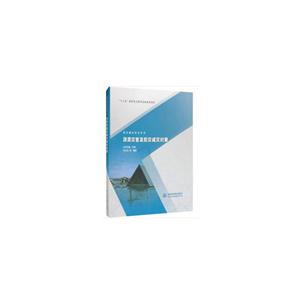
作者:李耀庄,何旭辉编著
页数:227页
出版社:中南大学出版社
出版日期:2022
ISBN:9787548750918
电子书格式:pdf/epub/txt
内容简介
本书系统介绍灾害定义、分类、特征基础上,介绍防灾减灾工程学的学科定位、研究内容、发展概况和发展趋势。然后介绍工程中四种土木工程领域中常见的典型灾害:火灾、地震、地质灾害和风灾的形成机理及其防治对策。最后介绍灾害的风险管理,包括灾害风险概念、风险分析方法及风险控制。
目录
Chapter 1 Introduction
1.1 Disasters
1.2 Disaster prevention and mitigation engineering discipline positioning and research contents
1.3 Development overview and trend of disaster prevention and mitigation
Chapter 2 Fire Disaster
2.1 Definition, classification, characteristics and hazards of fire
2.2 Building fire
2.3 High-temperature performance of building materials
2.4 Fire prevention and disaster mitigation measures
2.5 Brief introduction of fire-resistant design methods for structures
2.6 Structural fire protection measures
Chapter 3 Earthquake Disaster
3.1 Introduction of earthquake
3.2 Basic concepts, types, and causes of earthquakes
3.3 Earthquake magnitude and intensity
3.4 Earthquake activity and its distribution
3.5 The purpose and requirements of seismic fortification of engineering structure
3.6 Destruction effect of earthquakes
3.7 Measures of reducing earthquake disasters
3.8 Damping and isolation of engineering structures
Chapter 4 Geological Disaster
4.1 Geological disasters and classification
4.2 Landslide disaster and its prevention and control
4.3 Collapse disaster and its prevention
4.4 Mudslide disaster and its prevention and control measures
4.5 Ground settlement and its prevention
4.6 Other common geological disasters in civil engineering
Chapter 5 Wind Disaster
5.1 Wind characteristics of atmospheric boundary layer
5.2 Wind resistance design and wind vibration control of bridge
5.3 Wind resistant design and wind vibration control of building structures
Chapter 6 Disaster Risk Management
6.1 Disaster risk overview
6.2 Risk analysis methods
6.3 Risk control
6.4 Cases
References
1.1 Disasters
1.2 Disaster prevention and mitigation engineering discipline positioning and research contents
1.3 Development overview and trend of disaster prevention and mitigation
Chapter 2 Fire Disaster
2.1 Definition, classification, characteristics and hazards of fire
2.2 Building fire
2.3 High-temperature performance of building materials
2.4 Fire prevention and disaster mitigation measures
2.5 Brief introduction of fire-resistant design methods for structures
2.6 Structural fire protection measures
Chapter 3 Earthquake Disaster
3.1 Introduction of earthquake
3.2 Basic concepts, types, and causes of earthquakes
3.3 Earthquake magnitude and intensity
3.4 Earthquake activity and its distribution
3.5 The purpose and requirements of seismic fortification of engineering structure
3.6 Destruction effect of earthquakes
3.7 Measures of reducing earthquake disasters
3.8 Damping and isolation of engineering structures
Chapter 4 Geological Disaster
4.1 Geological disasters and classification
4.2 Landslide disaster and its prevention and control
4.3 Collapse disaster and its prevention
4.4 Mudslide disaster and its prevention and control measures
4.5 Ground settlement and its prevention
4.6 Other common geological disasters in civil engineering
Chapter 5 Wind Disaster
5.1 Wind characteristics of atmospheric boundary layer
5.2 Wind resistance design and wind vibration control of bridge
5.3 Wind resistant design and wind vibration control of building structures
Chapter 6 Disaster Risk Management
6.1 Disaster risk overview
6.2 Risk analysis methods
6.3 Risk control
6.4 Cases
References















